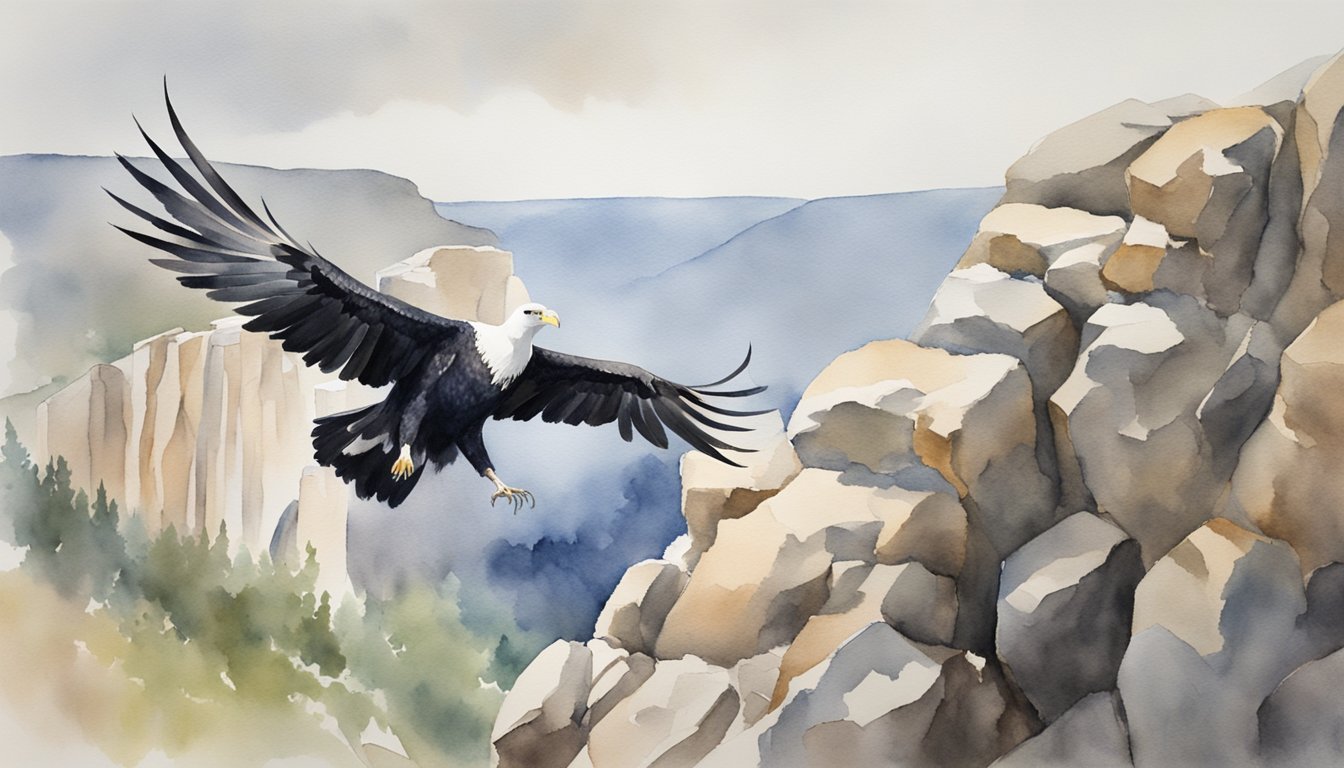Condor Identification and Biology

Condors are among the most impressive birds in the sky, characterized by their significant size and distinctive features. This section delves into their physical attributes, natural behaviors, lifespan, as well as their preferred habitats and range.
Physical Characteristics
California Condor (Gymnogyps californianus):
- Wingspan: Up to 9.8 feet (3 meters), one of the largest of any North American bird.
- Size & Weight: Can reach a length of 4.5 feet (1.4 meters) and weigh between 17 to 25 pounds (7.7 to 11.3 kilograms).
- Plumage: Mostly black with white patches of feathers under the wings.
- Beak: Strong and hooked, adapted for feeding on carrion.
Andean Condor (Vultur gryphus):
- Wingspan: Slightly larger wingspan than the California condor, averaging around 10.5 feet (3.2 meters).
- Size & Weight: Typically between 24 to 33 pounds (11 to 15 kilograms), with a body length of up to 4 feet (1.2 meters).
- Plumage: Mostly black but males have a distinctive white collar around the neck and large white patches on the wings.
- Beak: Similar to the California condor, strong and designed for a scavenger’s diet.
Behavior and Lifespan
- Flight: Capable of soaring gracefully for hours without a single flap of their gigantic wings.
- Diet: Scavengers, primarily feeding on large carcasses such as deer, cattle, and sea lions.
- Lifespan: Both species can live up to 60 years in the wild and even longer in captivity.
- Sexual Maturity: They reach sexual maturity around 6 to 8 years of age.
- Breeding Behavior: Known for their elaborate courtship dances and monogamous pairings. Pairs often raise a single chick every two years.
Habitat and Distribution
- California Condors: Currently found in the wild in California, Arizona, Utah, and Baja California. They nest in caves and large trees in rugged mountainous habitats.
- Andean Condors: Inhabit the Andes Mountains, ranging from Venezuela to the southern tip of South America. Prefers open grasslands and alpine areas up to 18,000 feet (5,500 meters) in elevation.
- Reintroduction Efforts: Due to conservation programs, there are now several hundred free-flying birds in these regions, a significant increase from near extinction levels in the 20th century.
Conservation and Threats
In addressing the stark challenges faced by condors, conservation strategies have focused on mitigating threats such as lead poisoning and improving breeding success to foster recovery.
The Plight of the Condors
Condors, known for their impressive wingspans and status as one of the world’s largest scavengers, are facing a perilous situation. The California condor, once ranging broadly across North America, experienced drastic population declines, leading to its classification as an endangered species. Major threats include lead poisoning from ingesting contaminated prey, which remains the principal challenge to their recovery. Other factors such as habitat loss and secondary poisoning also contribute to their plight.
Conservation Efforts
In response to dwindling numbers, cooperative efforts have been established to save condors from extinction. Initiatives include captive breeding programs, which began in the 1980s and have been essential in increasing condor numbers. Conservationists also engage in captive breeding, egg collection, and radio telemetry studies to monitor condor movements and habitat use. Breeding programs have successfully bolstered the population, allowing for periodic releases of these birds back into the wild.
Human Impact and Recovery
The detrimental impact of human activity, like the use of lead-based ammunition, poses significant threats to condor populations. To combat lead poisoning, organizations have advocated for the use of non-lead ammunition within condor habitats. Additionally, recovery efforts strive to establish self-sustaining populations across their historical range. Education and policy changes remain vital in promoting condor conservation and fostering a positive trend in their recovery.

